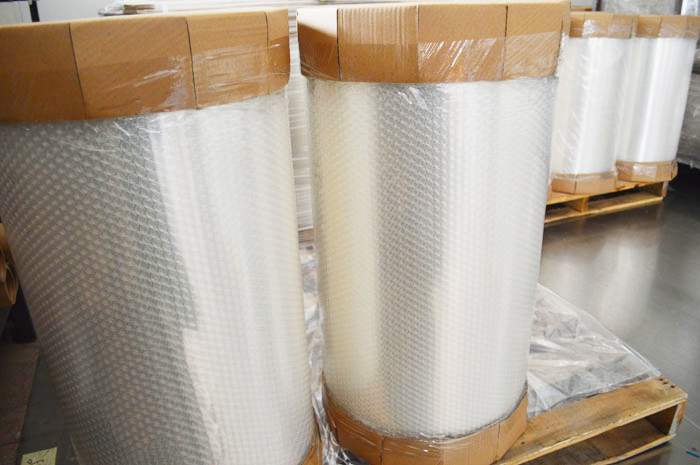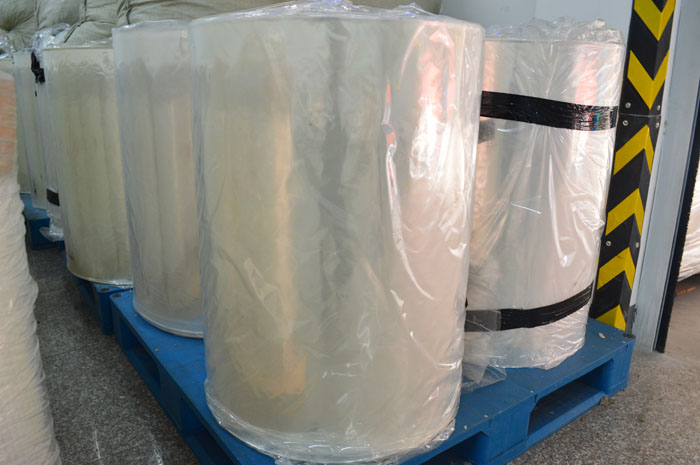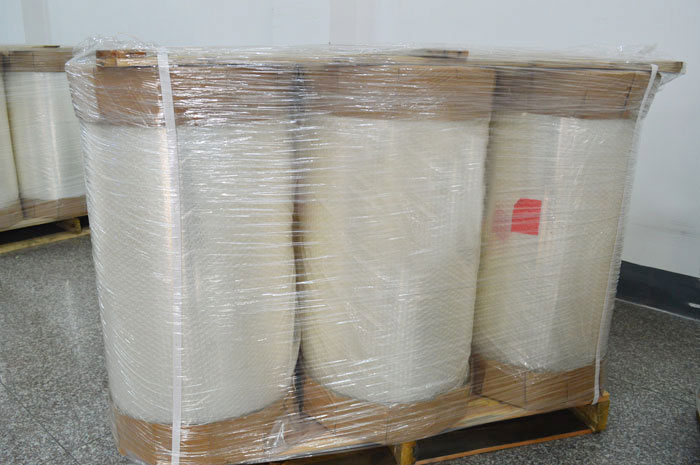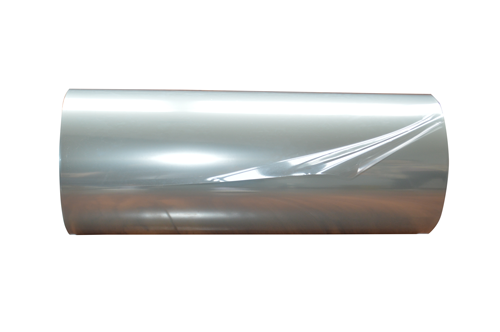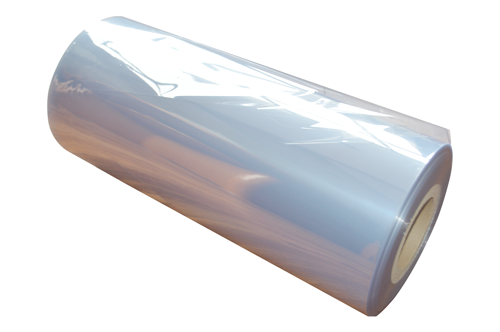General properties of shrink film and selection of materials
Unitization: This is one of the biggest features of shrink film packaging. With the superior winding force and retracting property of the film, the product is compactly and fixedly bundled into one unit, so that the scattered small pieces become a whole, and the product does not have any scattering and separation even under adverse circumstances, and the degree is not sharp. The edges and stickiness are so as not to cause damage.
Primary protection: Primary protection provides surface protection of the product, forming a very light and protective appearance around the product to achieve dust, oil, moisture, water, and theft. It is especially important that the wrapping film package makes the packaged articles evenly stressed, and avoids damage caused by uneven force. This is not the case with traditional packaging methods (bundling, packaging, tape, etc.).
Shrink film compression fixability: The product is wrapped by the retractive force of the stretched film to form a compact unit that does not occupy space, so that the trays of the product are tightly wrapped together, which can effectively prevent the transportation process. The misalignment and movement of the products in the middle, while the adjustable tensile force can make the hard products close to each other, making the soft products tight, especially in the tobacco industry and the textile industry.
Cost-saving: The product packaging can be effectively reduced by using the wrapping film. The winding film is only about 15% of the original box packaging, about 35% of the heat shrinkable film, and about 50% of the carton packaging. At the same time, it can reduce the labor intensity of workers, improve packaging efficiency and packaging grade.
material selection.
The printing of the shrink film label has been briefly analyzed, affecting its quality. In addition to the control of the printing process, the material plays a decisive role. Therefore, the selection of the right material is the key. So how to choose?
(1) Material thickness. The thickness of the film material is determined according to the application field, cost, film properties, shrinkage properties, printing process, and labeling process requirements of the heat shrinkable label. It is generally required that the film thickness of the shrink film label should be 30-70 micrometers, and the common film specifications are 40 micrometers and 50 micrometers.
(2) Material shrinkage rate. The shrinkage of the film is generally required to be within the range of application, and the transverse (TD) shrinkage is higher than the longitudinal (MD) shrinkage. The transverse shrinkage of commonly used materials is 50% to 52% and 60% to 62%, and can reach 90% in special cases. The longitudinal shrinkage rate is required to be between 6% and 8%. When making a shrink film label, try to choose a material with a small longitudinal shrinkage.
(3) Environmental protection of materials. The materials used for the heat shrinkable film are mainly various thermoplastic films. Originally based on PVC shrink film, as the market demand continues to develop, PVC (polyvinyl chloride) shrink film is gradually reduced, and various PE, PP, PET (polyester), PETG (modified polyester), PVDC, OPS Multi-layer co-extruded heat shrinkable films such as (oriented polystyrene), OPP, and POF have developed rapidly and become the mainstream in the market. They have their own characteristics in terms of shrinkage characteristics, environmental protection, etc., and should be considered in consideration of the specific application of the product. Although the domestic market is still dominated by PVC, with the gradual improvement of environmental protection requirements, the application of environmentally friendly films will become more and more extensive.
Primary protection: Primary protection provides surface protection of the product, forming a very light and protective appearance around the product to achieve dust, oil, moisture, water, and theft. It is especially important that the wrapping film package makes the packaged articles evenly stressed, and avoids damage caused by uneven force. This is not the case with traditional packaging methods (bundling, packaging, tape, etc.).
Shrink film compression fixability: The product is wrapped by the retractive force of the stretched film to form a compact unit that does not occupy space, so that the trays of the product are tightly wrapped together, which can effectively prevent the transportation process. The misalignment and movement of the products in the middle, while the adjustable tensile force can make the hard products close to each other, making the soft products tight, especially in the tobacco industry and the textile industry.
Cost-saving: The product packaging can be effectively reduced by using the wrapping film. The winding film is only about 15% of the original box packaging, about 35% of the heat shrinkable film, and about 50% of the carton packaging. At the same time, it can reduce the labor intensity of workers, improve packaging efficiency and packaging grade.
material selection.
The printing of the shrink film label has been briefly analyzed, affecting its quality. In addition to the control of the printing process, the material plays a decisive role. Therefore, the selection of the right material is the key. So how to choose?
(1) Material thickness. The thickness of the film material is determined according to the application field, cost, film properties, shrinkage properties, printing process, and labeling process requirements of the heat shrinkable label. It is generally required that the film thickness of the shrink film label should be 30-70 micrometers, and the common film specifications are 40 micrometers and 50 micrometers.
(2) Material shrinkage rate. The shrinkage of the film is generally required to be within the range of application, and the transverse (TD) shrinkage is higher than the longitudinal (MD) shrinkage. The transverse shrinkage of commonly used materials is 50% to 52% and 60% to 62%, and can reach 90% in special cases. The longitudinal shrinkage rate is required to be between 6% and 8%. When making a shrink film label, try to choose a material with a small longitudinal shrinkage.
(3) Environmental protection of materials. The materials used for the heat shrinkable film are mainly various thermoplastic films. Originally based on PVC shrink film, as the market demand continues to develop, PVC (polyvinyl chloride) shrink film is gradually reduced, and various PE, PP, PET (polyester), PETG (modified polyester), PVDC, OPS Multi-layer co-extruded heat shrinkable films such as (oriented polystyrene), OPP, and POF have developed rapidly and become the mainstream in the market. They have their own characteristics in terms of shrinkage characteristics, environmental protection, etc., and should be considered in consideration of the specific application of the product. Although the domestic market is still dominated by PVC, with the gradual improvement of environmental protection requirements, the application of environmentally friendly films will become more and more extensive.






